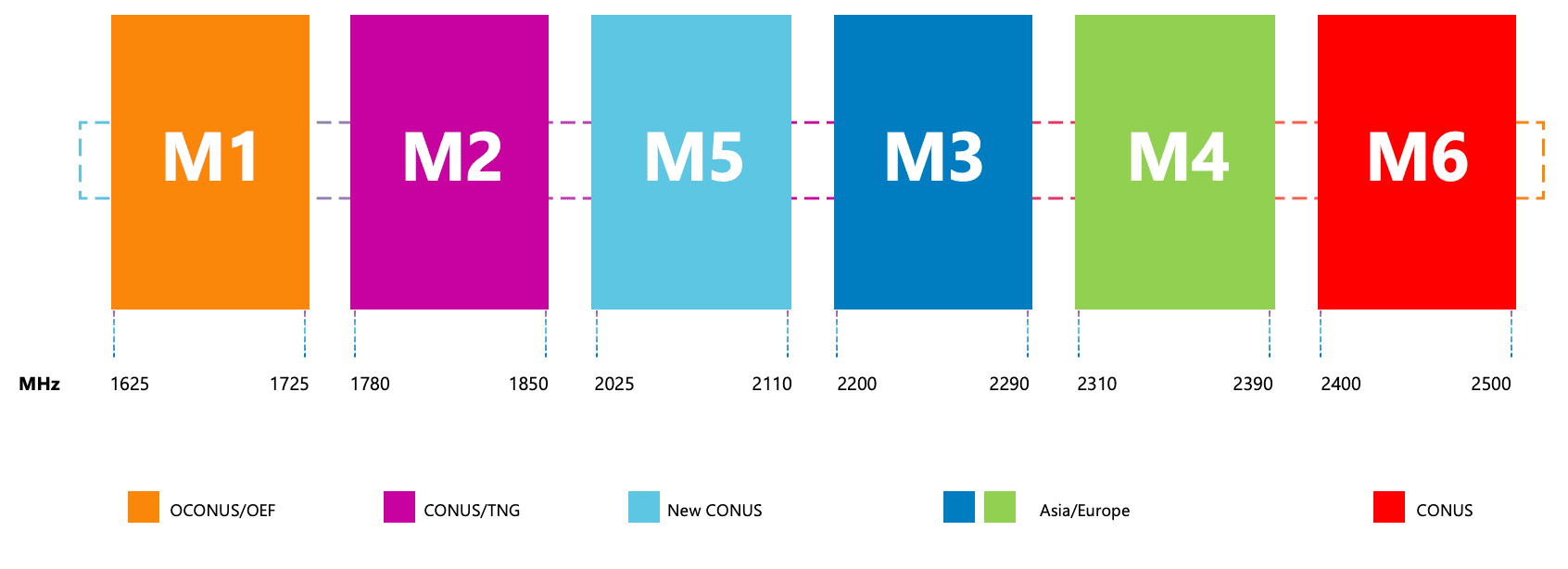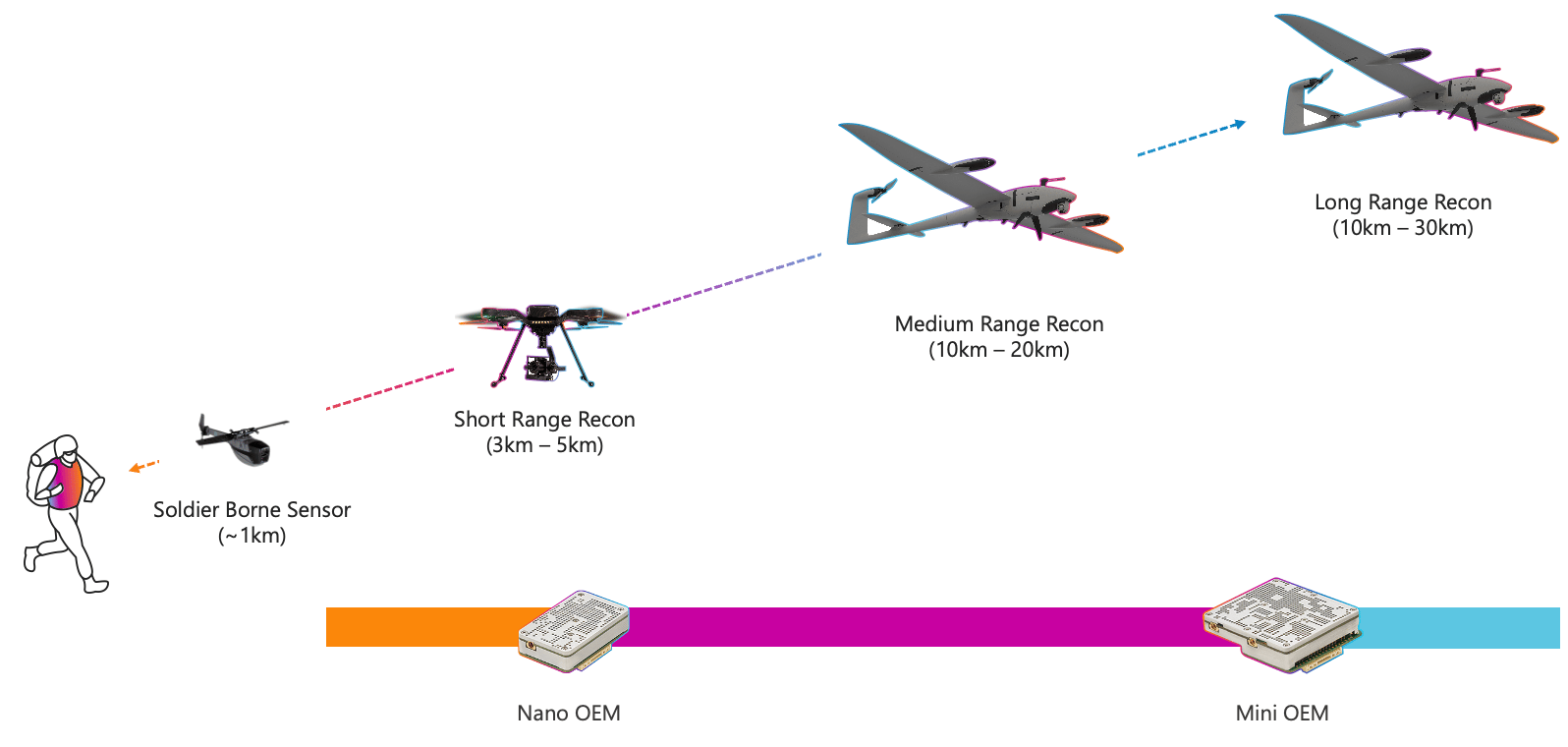Doodle Labs’ Helix Mesh Rider® Radio is a Blue UAS-compliant datalink covering multiple licensed bands for US military applications. Its development was sponsored by the US Department of Defense’s Defense Innovation Unit.
When the DIU originally issued an AOI seeking a new datalink for its Blue UAS Framework 2.0 initiative, it outlined six main requirements:
- Coverage of multiple frequency bands
- Low SWaP
- Long range
- Encryption
- Standards-based
- Integration with other Blue vendors/components
Doodle Labs’ Helix successfully delivers on all six to deliver a drone datalink that’s DoD-approved and ready for easy integration by any OEM selling platforms into the Defense space. Here’s how:
Frequency band coverage
“To make a system approved for use globally, there are always different frequency bands that are approved in different geographies and it’s a huge operational pain point having to swap out a radio or not have the authority to ship to or use a system in a certain place,” said Ashish Parikh, VP Business Development and Head of Government Programs for Doodle Labs, on a recent webinar with DIU on drone technology innovation in the Blue UAS program.
The DIU needed a radio solution to cover a range of licensed radio frequencies often used by the DoD, from M1 to M6, which is 1.6 GHz to 2.5 GHz.
“If a single radio could operate on those bands, then you wouldn’t have to swap a radio in and out,” Parikh said. “This was a very unique challenge because most radios out there, including ours, were single-band radios. So we had [radio] versions that actually covered each of those single frequencies, but not a single radio with all those bands in one.”
Doodle Labs subsequently developed Helix Mesh Rider® Radio, which covers all six bands without the need to change any physical equipment. As such, it’s the only mesh radio that meets all Blue UAS requirements in a single radio.

Low SWaP
Maintaining small SWaP is very important to all drone platforms, but none more crucial than in DoD use-cases in the battlefield and elsewhere. That’s why small SWaP was expressly listed in Blue UAS Framework requirements for a new, compliant datalink.
The mini-OEM form factor born from DIU-sponsored development marks a 55% reduction in footprint from previous generations of Doodle Labs’ Mesh Rider® Radio, all the way down to 47 x 51 x 6.5 mm. The nano-OEM form factor chops even that tiny footprint nearly in half.
mini-OEM and nano-OEM are both very SWaP-friendly options for any type of drone deployment and meet the DoD’s requirements on size, weight and power.
Long range
Blue UAS Framework 2.0’s datalink requirements expanded on the initial scope of Short-Range Reconnaissance range (3 km – 5 km), stretching out to include Medium Range Recon (10 km – 20 km) and Long-Range Recon (10 km – 30 km) ranges and, in fact, long beyond.
Doodle Labs has customers who perform telemetry with fixed-wing flyers at 100+ km and drones streaming full-HD video at 20 km+

Encryption
NIST created FIPS 140 to coordinate the standards for cryptography modules that include both hardware and software components. The security requirements cover areas related to the secure design and implementation of a cryptographic module.
Compliance with FIPS 140 must be validation tested by a 3rd party NIST-approved testing lab.
Though the FIPS 140-2 standard won’t officially sunset until 2026, Doodle Labs developed Helix Mesh Rider® Radio to the more stringent FIPS 140-3 compliance standard to future-proof compliance and long-term adherence to Blue UAS requirements.
Standards-based interoperability
Doodle Labs is a Qualcomm partner and builds its radios on Qualcomm 802.11 chipsets. The company uses standard interfaces and builds its features and functionality within a LINUX-based operating system, so this standards-based approach sets the table for other Blue UAS-cleared vendors to build deep, powerful integrations with Doodle Labs Mesh Rider® Radios.
The Blue UAS Framework prioritizes and mandates this type of standards-based approach to product development and production.
Integrations with other Blue vendors
The obvious and necessary result of a standards-based approach to developing drone components is that they seamlessly and successfully integrate with other components within the Blue UAS ecoystem.
“One of the big benefits of Framework is not just creating awesome capabilities with the Helix and others: it’s the interoperability and the connection between those that is really what we find to be incredibly powerful,” said Matthew Borowski, Joint Program Manager at DIU and current leader of the Blue UAS program, on the webinar with Doodle Labs. “Not just one single piece of technology — new radio, new camera, new whatever — but when you have a suite of things that works together natively and all that integration and all that time and money you spend trying to get something to work for the first time; we’ve already done it, the companies have already done that.
“So now you can go buy, use and add your special sauce add the thing that makes your system unique on top of that,” Borowski said. “Now you’ve got a set of components that are all built individually, tested together and proven compliant by the DoD. So we’re hoping to get people from zero to flight in a secure way, much faster – that’s really the intention.”
Doodle Labs has worked with ModalAI to build a direct integration with their VOXL 2 autopilot, has developed compatibility with the Soldier Robotic Controller (S-Roc) program in line with integration partners Vantage Robotics and UXV Technologies and has integrated with Auterion’s QGC-Gov to be able to visualize mesh settings and status right in the app’s interface.
For more on Doodle Labs’ Helix radio, click here.
To watch Doodle Labs and DIU’s on-demand webinar on the Blue UAS Framework’s contribution to innovation in the drone space, click here.
